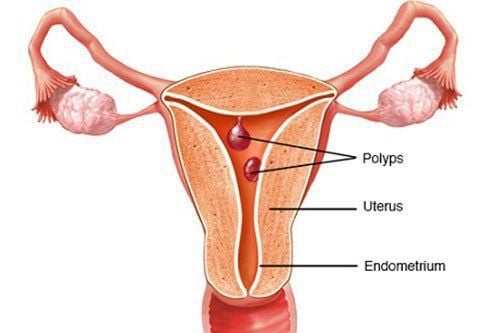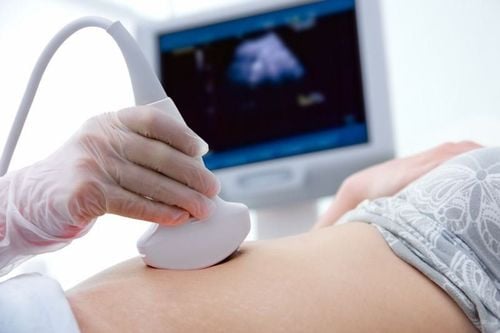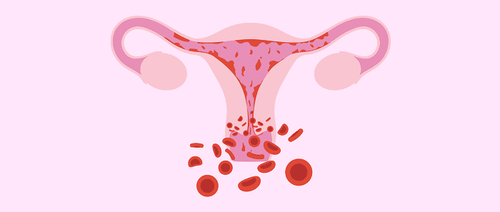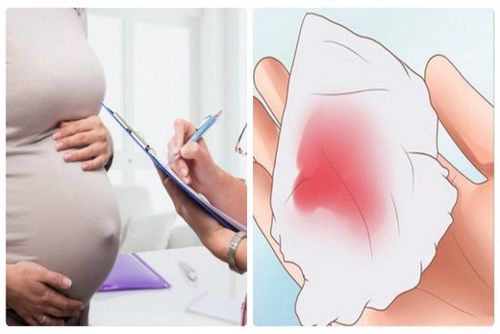This is an automatically translated article.
The article was professionally consulted by BSCK II, Master Nguyen Thi Huong Linh - Department of Obstetrics and Gynecology, Vinmec Times City International Hospital.If you still have many doubts when being diagnosed and assigned to treat cervical polyps, the following article will help you better understand cervical polyps and treatment methods. Let's find out together!
1. What are cervical polyps?
Cervical polyps are abnormal growths of cells on the cervix. Polyps range in size from a few millimeters (about the size of a grain of rice) to several centimeters, often finger-like, bulbous, or fungal, and may be solitary or may grow in clusters. Cervical polyps are pink, tender, and bleed easily to the touch. Polyps can be located on the surface of the cervix or inside the cervical canal, in some cases it protrudes through the cervix and into the vagina.Cervical polyps are usually benign, not dangerous and do not affect future birth. However, there are rare cases of cervical cancer that arise from cervical polyps and are caused by HPV.

2. Causes of uterine polyps
The cause of cervical polyps is currently unknown. However, there are several factors that increase the risk of cervical polyps:High estrogen levels, especially in women of childbearing age and perimenopause. At age 19−29 pg/ml, normal is 149 pg/ml, age 30−39 is 210 pg/ml, age 40–49 is 152 pg/ml, age 50–59 is 130 pg/ml. Particularly for women during menstruation, it fluctuates at 50-400 pg/ml. If it's higher than this normal, you have a higher risk of cervical polyps. Vaginal-cervical infections.
3. Signs that you have cervical polyps
Cervical polyps often have no obvious symptoms, so women are often difficult to detect and confuse with some other diseases. Usually, women often discover the disease during routine gynecological examination or when there are some unusual symptoms.
The most common symptom is abnormal vaginal bleeding :
Bleeding after sex . Bleeding between periods. Bleeding after douching. Bleeding after menopause. Sometimes vaginal discharge is too much white or yellow
The above signs can also be early signs of cervical cancer, so you should go to medical facilities early for examination and diagnosis. corpse.
4. Cervical polyp diagnosis
Cervical polyps are not difficult to diagnose, when gynecological examination doctors can detect cervical polyps. However, cases of cervical polyps will be more difficult to detect, in these cases with the help of ultrasound, doctors will help women detect the disease.
5. Cervical Polyp Treatment
Usually when cervical polyps are detected, women want early treatment to eliminate discomfort and abnormalities caused by polyps. Removing cervical polyps is usually simple, can be done in the office, and doesn't require pain medication. Methods of treating cervical polyps can be done right at the clinic:
Twisting the base of the cervical polyp on the surface. Tie the surgical suture around the base of the polyp and remove it. Use clamps to remove polyps. Some methods of removing polyp legs: Liquid nitrogen, electrocautery, laser For cases of cervical polyps, large polyps, you may have the procedure in the operating room; The doctor will open the cervical canal, cut the polyp and burn the leg, then stitch to restore the cervical canal.
6. Post-procedure care
After the procedure you will take antibiotics to prevent infection. The polyp will be sent for histopathology for cytological examination. You may have some vaginal bleeding for 1-2 days, but don't worry, this will go away on its own. Abstain from sex for 4-6 weeks as advised by your doctor. You should see your doctor again after 1 month.
7. Do cervical polyps recur?
In some cases, polyps are removed and reappeared after a while. Causes of recurrent cervical polyps are:
Chronic inflammation causes, if the polyp is simply removed without inflammation, the inflammation in the uterus still exists causing polyps to reappear. When removed, but still not completely root, polyps grow deep in the uterus, causing polyps to regrow. When proceeding to remove Polyps, only visible polyps can be treated, but not all invisible Polyps are removed. These polyps will continue to grow into new polyps. Therefore, for the sake of your health, have an annual physical examination and see your doctor immediately if you have any unusual signs.
Please dial HOTLINE for more information or register for an appointment HERE. Download MyVinmec app to make appointments faster and to manage your bookings easily.














